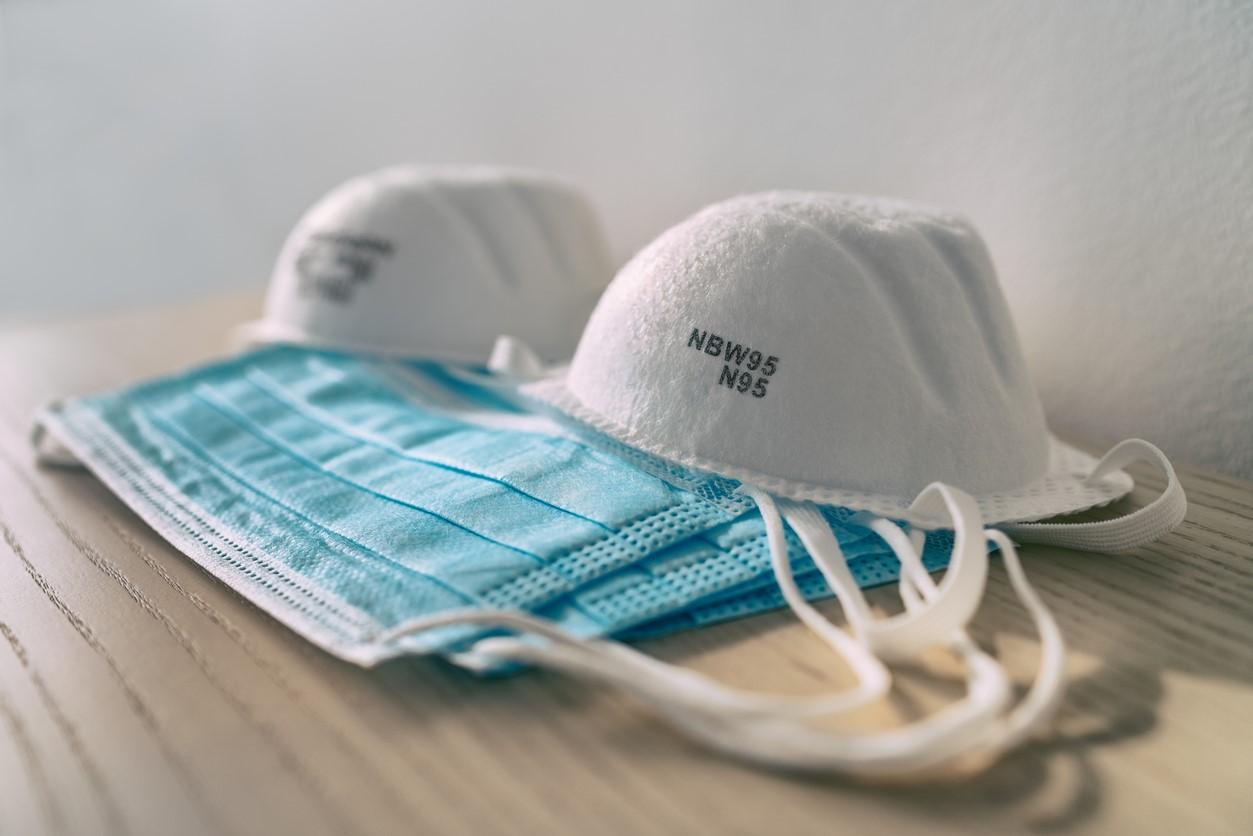A study today in the Annals of Internal Medicine suggests that medical masks may offer similar effectiveness as N95 respirators in protecting healthcare workers (HCWs) exposed to COVID-19 patients in certain settings, but experts caution against that interpretation of the results.
The World Health Organization (WHO) recommends continuous wear of either medical masks or N95s when caring for COVID-19 patients, while the US Centers for Disease Control and Prevention (CDC) advises using N95s.
Wide between-country differences
Led by researchers at McMaster University in Canada, the randomized trial tracked COVID-19 infections among 1,009 HCWs directly caring for infected patients at 29 hospitals in Canada, Israel, Pakistan, and Egypt from May 4, 2020, to Mar 29, 2022. It is the first peer-reviewed randomized clinical trial comparing medical masks versus N95 respirators in preventing COVID-19 among healthcare workers.
HCWs were randomly assigned to wear either medical masks or a fit-tested N95 filtering facepiece respirator (FFR) for 10 weeks (the fit-testing protocol wasn't defined). COVID-19 infection was confirmed using reverse-transcription polymerase chain reaction (RT-PCR) in 52 of 497 (10.46%) HCWs in the medical mask group, compared with 47 of 507 (9.27%) in the N95 group (hazard ratio [HR], 1.14; 95% confidence interval [CI], 0.77 to 1.69).
A subgroup analysis showed that 8 of 131 (6.11%) HCWs in the medical mask group and 3 of 135 (2.22%) in the N95 group were infected in Canada (HR, 2.83; 95% CI, 0.75 to 10.72), as were 6 of 17 (35.29%) versus 4 of 17 (23.53%) in Israel (HR, 1.54; 95% CI, 0.43 to 5.49), 3 of 92 (3.26%) versus 2 of 94 (2.13%) in Pakistan (HR, 1.50; 95% CI, 0.25 to 8.98), and 35 of 257 (13.62%) versus 38 of 261 (14.56%) in Egypt (HR, 0.95; 95% CI, 0.60 to 1.50).
The authors cautioned that HCWs could have been infected outside of the hospital and that the results may not apply to other countries because of differences in treatment effects. Also, wide confidence intervals indicating a high degree of uncertainty, differences in self-reported adherence and baseline SARS-CoV-2 antibody status, and between-country differences in vaccination coverage and dominant circulating variants may have skewed the results.
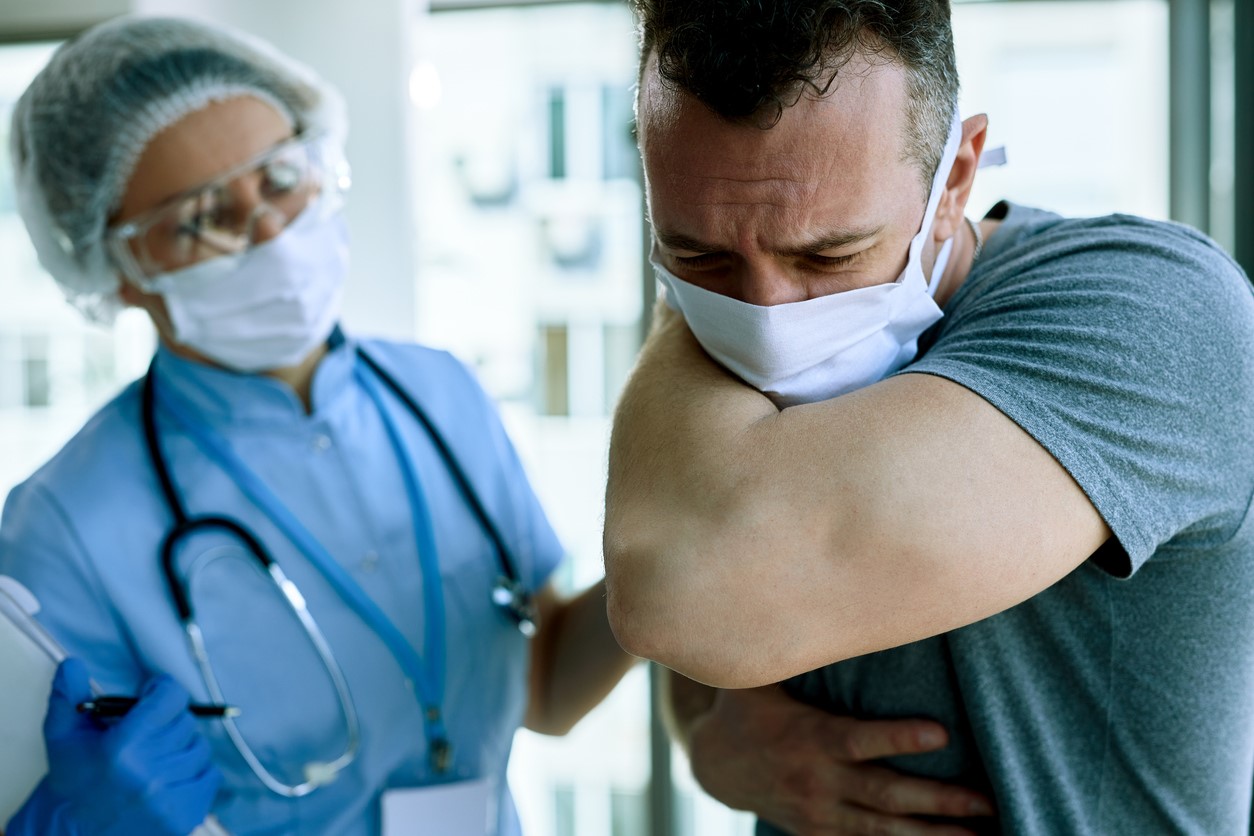 "Among health care workers who provided routine care to patients with COVID-19, the overall estimates rule out a doubling in hazard of RT-PCR–confirmed COVID-19 for medical masks when compared with HRs of RT-PCR–confirmed COVID-19 for N95 respirators," they concluded.
"Among health care workers who provided routine care to patients with COVID-19, the overall estimates rule out a doubling in hazard of RT-PCR–confirmed COVID-19 for medical masks when compared with HRs of RT-PCR–confirmed COVID-19 for N95 respirators," they concluded.
"The surgical masks were not statistically less effective than N95s in preventing COVID-19 infections in health-care providers looking after patients with COVID-19," lead author Mark Loeb, MD, said in a McMaster news release emailed to journalists. Loeb told CIDRAP News that his clinical duties precluded time for an interview on the study findings.
But Michael Osterholm, PhD, MPH, director of the Center for Infectious Disease Research and Policy at the University of Minnesota, publisher of CIDRAP News, said that scientific inquiry needs to shift away from medical masks, which have already been established as inferior to N95s. "We just don't need another poorly designed and conducted study on this," he said.
Osterholm called the WHO's recommendation for HCWs to wear either masks or N95s during COVID-19 patient care "public health malpractice."
"I'm convinced that someday people are going to look back on this and ask, 'How could they have known what they knew about this and not done more to protect us?' "
The agency was slow to acknowledge that SARS-CoV-2 spreads through aerosols rather than droplets, a failure that WHO Chief Scientist Soumya Swaminathan, MBBS, MD, who is leaving her post, now says is her biggest regret.
Challenging the dogma of mask effectiveness
Building on the authors' caveats, Raina MacIntyre, MBBS, PhD, a preeminent researcher and epidemiologist at the University of New South Wales in Sydney, who was not involved in the study, told CIDRAP News that the Annals study was inconclusive and doesn't support its conclusion because of flaws in its design.
"It shows a general trend to N95s being superior to surgical masks at all sites except Egypt, noting that both study arms used an N95 respirator for aerosol-generating procedures, and the intervention was tested only for periods of care outside of such procedures," said MacIntyre, who has conducted most of the published studies comparing the effectiveness of masks and N95s against respiratory viruses in healthcare settings.
MacIntyre noted that the HCWs were instructed to wear a mask or respirator when caring for patients with confirmed or suspected COVID-19, according to the current policy at their hospital. HCWs in Canada were allowed to make their own decisions about whether to don a mask or N95, regardless of which intervention they were assigned to.
The problem with that approach is that many HCWs are infected by patients with unrecognized COVID-19, Michael Klompas, MD, associate professor of infectious disease at Brigham and Women's Hospital in Boston and author of seminal studies challenging the dogma of mask effectiveness against respiratory viruses.
"What this all means is that it's difficult, if not impossible, to attribute participants' COVID infections in this study to their specific interactions with COVID patients when they were randomized to N95 vs medical masks," he said.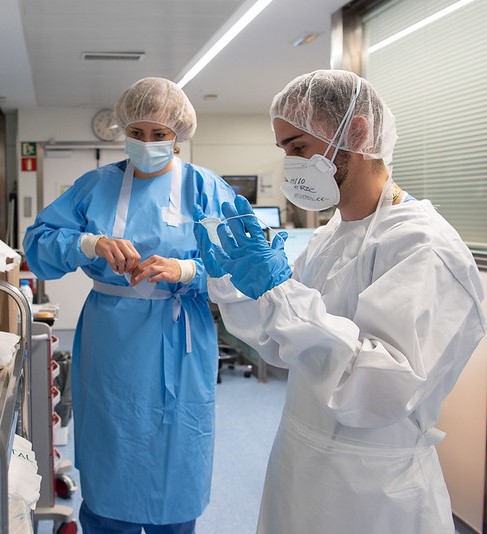
In addition, only 81% of N95 users reported using them all the time. MacIntyre said that she and colleagues previously published a study showing that N95s must be worn continuously during a shift to be effective—including while caring for patients assumed to be non-infectious and conducting non-patient care activities—consistent with ubiquitous airborne transmission risk in healthcare settings.
"This reflects the same findings of the Radanovich trial, which showed targeted use of respiratory protection or masks is not effective," she said, referring to a 2019 study on influenza. "The longer an HCW is in the hospital (a shift is usually 6 to 8 hours), the greater the risk of inhaling accumulated aerosols."
The upshot, said CIDRAP research consultant and respiratory protection expert Lisa Brosseau, ScD, CIH, is that these types of studies may reinforce health system misperceptions that masks are sufficient protection. "It's the same thing every time," she said of poorly designed studies. "Everybody says, 'Oh look, surgical masks are just as good as respirators, so we don't need a respirator.' A lot of healthcare workers just aren't getting the kind of respiratory protection they need."
Most HCWs not infected in hospital
But patient wards are not the only places in which HCWs are at risk for infection, Klompas said. "Most healthcare workers who get infected with SARS-CoV-2 get infected outside of patient care (at home, in the community, or during non-clinical interactions with colleagues at work in breakrooms and workrooms)," he said.
Neither was the study designed to carefully differentiate between clinical and nonclinical COVID-19 exposures or to focus on the immediate risk of infection in the few days after caring for infected patients. "It studied providers for a period of up to 10 weeks, regardless of whether they were taking care of COVID patients," Klompas added. "About a quarter of participants reported never caring for COVID patients yet were still included in the analysis."
It also relied on self-reported household and community exposures, which he said are unreliable because many infections go unrecognized. This is because many cases are asymptomatic, most transmission occurs before an infected person develops symptoms, and not all people with symptoms get tested.
Study participants were required to get tested for infection only if they developed symptoms rather than be tested every time they cared for a COVID-positive patient, Klompas noted.
Changing COVID-19 burdens in countries during the study may also be a confounding factor, Klompas said. "The strongest signal suggesting N95s were protective occurred in Canada during 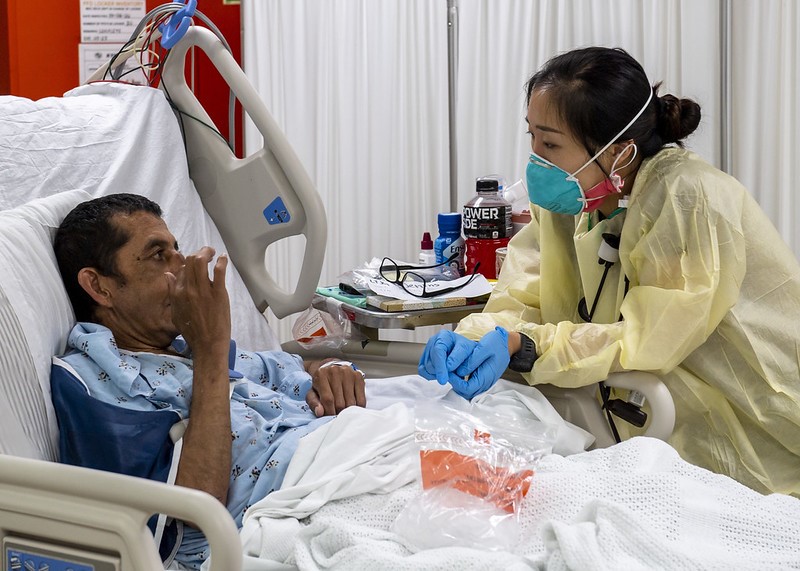 the early part of the pandemic, when community rates were low and thus workers were more likely to be preferentially exposed at work," he said. "Unfortunately, however, this period only accounts for one quarter of the trial participants and was very much underpowered unto itself to give reliable conclusions."
the early part of the pandemic, when community rates were low and thus workers were more likely to be preferentially exposed at work," he said. "Unfortunately, however, this period only accounts for one quarter of the trial participants and was very much underpowered unto itself to give reliable conclusions."
Rather, about 70% of participants came from Pakistan and Egypt amid community surges fueled by the Omicron variant later in the pandemic, he said, "injecting a great deal of noise into the analysis (because it's highly likely that many, if not most, of these healthcare workers were infected outside of clinical care by virtue of high community rates of infection."
MacIntyre also pointed out that a greater proportion of HCWs with more than 11 COVID-19 exposures were in the N95 arm (32.5%) than in the medical mask arm (26.2%), which would have further biased the results toward masks.
Dominant variant, vaccination uptake
A better-designed study, MacIntyre said, would have had a larger sample size and would have included an analysis by predominant variant of concern and COVID-19 vaccination status.
The researchers excluded only recipients of mRNA vaccines because those vaccines had an estimated efficacy of over 50%. This is problematic because Egyptian and Pakistani participants received the BBIBP-CorV (Sinopharm) vaccine, which phase 3 trial data suggest also has an efficacy of well over 50%, she said.
"They use a figure of '>50% efficacy' for excluding vaccines, but do not present the estimates of efficacy for Sinopharm and other vaccines, or any information on how they calculate this," she said. "This may explain the discrepancies between Egypt, which initially vaccinated with BBIBP-CorV, which, together with Pakistan, which also used the BBIBP-CorV, and heavily influenced the overall results."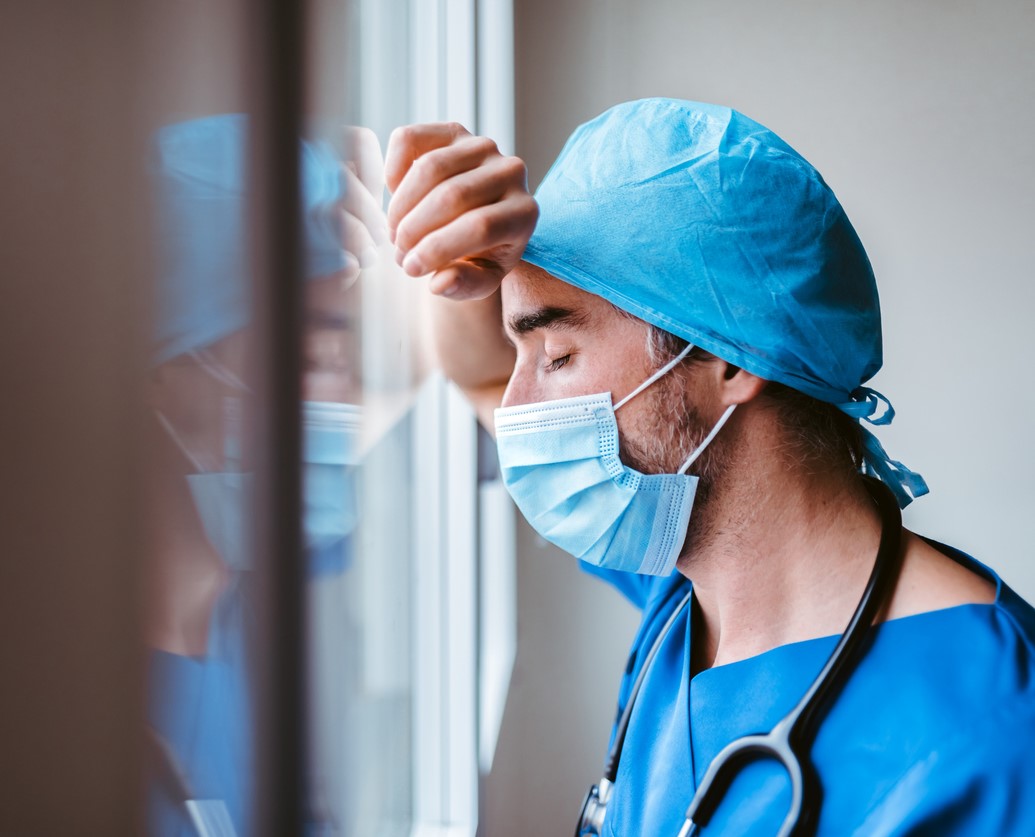
A control group was also needed, Brosseau said. "They could have probably come up with some type of 'control' group among healthcare workers with potential exposures who were not wearing either medical masks or N95 FFRs, especially before universal masking was implemented in mid-2020," she said.
Narrowing the outcome of interest (eg, relative protection of masks vs N95 FFRs for care of patients with confirmed infections) would likely also yield more meaningful results, according to Klompas. "This would entail PCR testing of all participants in the days immediately following a known COVID interaction (not waiting for symptoms anytime in the next 10 weeks) and sequencing both the patients' and HCWs' isolate in order to accurately attribute the infection to the specific patient interaction or to some other exposure," he said.
'It's time that healthcare thinks differently'
In a related commentary, Roger Chou, MD, of Oregon Health & Sciences University, pointed out that the noninferiority threshold set in the study may be unacceptable to HCWs (5% absolute increase in COVID-19 infections, a doubling of risk with medical masks). "In fact, the finding of noninferiority in this trial was consistent with up to a relative 70% increased risk," he wrote.
Thus, even with the limitations in the study design, Klompas said, "the ostensibly negative result comes with very wide confidence intervals that may conceal a difference in protective effect between face masks and N95s that many healthcare workers would find very meaningful."
This risk has real-world implications for HCWs, whom MacIntyre said are already burned out from overwhelming COVID-19 patient loads, repeated infections, and the effects of long COVID. "For countries facing health worker shortages and ongoing burden on their health systems, there is value in retaining their health workforce," she said. "Proper respiratory protection (respirators) is a small investment to make."
Medical masks, she said, aren't respiratory protection but rather protect against liquid splashes and sprays. Because SARS-CoV-2 is primarily transmitted via aerosols, inhalation—not direct splatters—presents the greatest transmission risk: "A healthcare environment during periods of high community transmission is an occupational risk for health workers regardless of whether or not direct patient care is provided or aerosol-generating procedures are done, and workplaces have a duty to protect their health and safety."
Brosseau agrees, saying that data have shown that people exhale particles containing respiratory viruses such as SARS-CoV-2 and that some of it is live, replicable virus—and not just during intubation or bronchoscopy. "It's true that those procedures generate a lot of particles—but so do people," she said.
Vaccination is important, Brosseau added, but no vaccine is 100% effective. Fit-tested N95 FFRs add another layer of protection, are superior to masks, protect wearers for much longer, and can be reused for a day or more, depending on the HCW's patient contact.
"Elastomeric respirators with replaceable filters, which can be cleaned and reused many, many times, would have been a better long-term solution than disposable FFRs," she said. "If every HCW had been given a fit-tested elastomeric respirator in early 2020, many HCW and patient 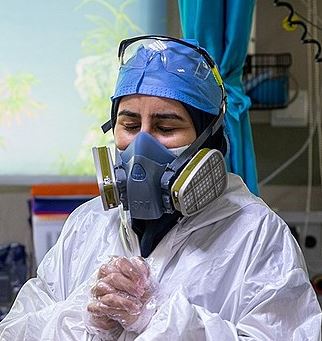 infections would have been prevented. And HCWs could still be wearing that same elastomeric respirator today." (See image Wikimedia Commons image at right by Hossein Mersadi.)
infections would have been prevented. And HCWs could still be wearing that same elastomeric respirator today." (See image Wikimedia Commons image at right by Hossein Mersadi.)
Yet, many healthcare systems still supply HCWs with only medical masks amid COVID-19 and the current flu and respiratory syncytial virus surges, putting patients at risk. "All those things we learned about COVID, why don't we apply them to the way we think about all viral respiratory diseases?" she asked. "It's time that healthcare thinks differently."
